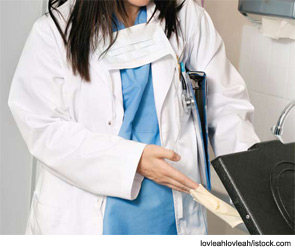
The idea of reusing single-use devices may bring to mind the recent news of a Las Vegas urologist who was investigated in March for supposedly resuing single-use devices. As the Las Vegas Review-Journal reports, Dr. Michael Kaplan is accussed of reusing, but not not decontaminating, endocavity needle guides. While Dr. Kaplan’s specific case may be unique, the idea of reprocessing single-use devices is not.
Explore This Issue
June 2011The trend to reprocess disposable, or single-use, instruments, a movement that dominates specialties like gastroenterology, cardiology and general surgery, is creeping into otolaryngology. By doing their homework on industry trends, otolaryngologists are in a position to influence purchasing decisions in their practices or hospitals, experts say. In the U.S., the types of reprocessed single-use head and neck instruments are limited mainly to microdebrider blades, certain navigation systems markers, cautery pens, coblation/radiofrequency handles and suction. However, third party reprocessors (TPR) routinely handle forceps, scissors, dissectors, myringotomy kits and many other devices.
Safety Issues
In 2000 and again in 2007, the U.S. Government Accountability Office (GAO) studied the safety of reprocessed single-use devices (SUD) and concluded that they pose no additional safety or health risks to patients.
With the passage of the Medical Device User Fee and Modernization Act (MDUFMA) in 2002, the U.S. Food and Drug Administration (FDA) also increased its oversight of reprocessing, including strict labeling requirements and specific MedWatch forms to report adverse events.
Reprocessing may be an option if the third party SUD reprocessor receives FDA approval, according to Daniel J. Vukelich, president of the Association of Medical Device Reprocessors in Washington, D.C., which promotes the proper reprocessing of medical devices labeled as single use.
Although thousands of SUDs have been approved for reprocessing, the practice generally remains limited to FDA Class I and II devices. The latter group accounts for up to three-quarters of reprocessed devices, which include pulse oximeter sensors, ultrasound catheters, drills, compression sleeves and most laparoscopic equipment.
In its 2008 report on the topic, the GAO found that 320,000 adverse reports associated with medical devices were filed between 2003 and 2006. Only 65 of these had a possible connection to reprocessed devices, and these were similar to adverse events reported for new devices. In fact, single-use medical instruments are often just reengineered versions of reusable instruments that easily lend themselves to reprocessing, Vukelich said.
“Part of the reason we’re in the business of reprocessing devices labeled for single use is that manufacturers no longer offer a reusable alternative,” he said. “If you buy a single-use reprocessable shaver, you’re going to get more bang for your buck, not to mention reducing your waste stream.”
Leave a Reply